This is a Tailboard type camera, which allows a wide range of movements and precise focusing, typical of studio and outdoor cameras of the late nineteenth century. The bellows, preserved in excellent condition, shows no light leaks and retains all its original flexibility. Its structure, carefully maintained, displays a noble and uniform patina that shows the passing of time with dignity without losing the original elegance of the Mackenstein finish.
The element that makes this piece a true rarity is the Eastman Roll Holder adapter that accompanies it. It is an example of the very first roll film holder, invented and manufactured by the Eastman Dry Plate & Film Co. in Rochester, New York, USA, a company later known as “Eastman Kodak” and before adopting its definitive name. The Roll Holders were distributed in Europe by the Mackenstein company itself. This device allowed the use of photographic paper roll film, then called “American Film”, before the appearance of flexible celluloid in 1889. It was used for only about five years, and some were later modified. This makes this Eastman Roll Holder in original condition a first-class museum piece. It is made of mahogany with wooden rollers and brass mechanisms, preserved in original condition, without later modifications, something extremely unusual. With this accessory, the camera could alternate between the use of glass plates or paper film, placing it at the technological forefront of its time.
The combination of a Mackenstein camera and a first-generation Eastman roll holder forms a set of enormous historical and collectible relevance. Not only because of its beauty, but because it represents the transition between plate photography and the birth of roll film. The name Mackenstein, engraved on the front, and the original plates with the Paris address “15 Rue des Carmes”, confirm its authentic provenance and its direct commercialization in Europe.
The Planigraphe Darlot No. 4 lens, with 1:9 aperture and serial number 1020, is a high-precision optical piece that reflects the mastery of the Darlot workshop, one of the most prestigious Parisian firms of the nineteenth century. Made around 1880, this model belongs to the “Planigraphe” series, designed to offer excellent field correction and uniform sharpness across the entire surface of the plate, qualities highly valued by portrait and architecture photographers. Its solid brass body preserves the original engraving with the manufacturer’s handwritten inscription, and maintains a polished finish that enhances its technical elegance. Darlot, founded by Jean Darlot, a disciple of Charles Chevalier, pioneer of photographic optics, distinguished itself by producing lenses of exceptional quality, which rivalled the German Voigtländer or the English Ross.
Roller-blind shutters, such as the one fitted to this camera, worked by means of a tensioned fabric curtain that moved rapidly in front of the photographic plate, opening a calibrated slit through which the light entered for a precise time. The speed was controlled by varying the spring tension and the size of the opening, which allowed exact exposures, both in studio and outdoors. This completely mechanical system was one of the most advanced innovations of its time and a direct precursor to modern focal-plane shutters. In addition, the set includes its original releasing cord, which allows the shutter to be triggered at a distance with smoothness and safety, maintaining the stability of the camera during exposure.
A museum piece, extremely rare to find complete and functional. Its value goes beyond aesthetics: it is a material testimony to the very origin of modern photography. This example will not only delight demanding collectors, but also those who appreciate nineteenth-century technical history and craftsmanship. An object that combines art, engineering and emotion.
This camera represents much more than adding an antique to a collection: it is possessing a historical testimony to the birth of modern photography, a piece that marked the transition from glass to roll film and embodies the technical genius of the nineteenth century. Its rarity, excellent condition and complete set of original accessories make it a secure and highly valuable investment both inside and outside the photographic collecting market. This photographic set awakens a deep emotional connection with the pioneers who, more than one hundred and thirty years ago, experienced for the first time the miracle of capturing light and transforming it into an image.
Measurements: 18 cm wide and 24.5 cm high (7,17 x 9,76 in).
History of the Mackenstein Camera
The Mackenstein firm was one of the most reputed photographic houses in France during the second half of the nineteenth century. Founded by the German engineer Heinrich Mackenstein in Paris, it specialized in the manufacture of high-quality cameras for professional photographers. Its workshop, located at 15 Rue des Carmes, became a reference of precision and design, highly valued by photographic studios and travelling photographers. Mackenstein cameras were distinguished by their solid construction in fine woods, their mechanical reliability and their ability to adapt to the advances of the time, such as rack-and-pinion focusing systems or synchronized roller-blind shutters.
During the 1880s, the company collaborated with important European opticians and distributors, including Darlot and Hermagis, integrating their lenses into its camera models. The appearance of roll film, promoted by George Eastman in the United States, marked a radical change in the history of photography. Mackenstein was one of the first European firms to offer adapters compatible with the new roll holders, ahead of most manufacturers. These hybrid cameras, capable of using both glass plates and paper film, represent a decisive technological turning point.
The Darlot Planigraphe lens that equips this model comes from another of the most celebrated Parisian houses. Jean Darlot was a disciple of Charles Chevalier, inventor of the first photographic lenses, and his optics enjoyed enormous prestige for their sharpness and optical correction. The Planigraphe model was especially appreciated for its ability to produce flat and uniform images, without distortions.
The Eastman Roll Holder, patented in 1885, marked the prelude to cinema and portable photography. It allowed for the first time the continuous exposure of images in sequence, freeing the photographer from the individual loading of each plate. With the arrival of celluloid in 1889, this system was perfected, but the first roll holders, such as the one accompanying this camera, are foundational pieces in the development of photography. Mackenstein, with its innovative spirit, knew how to incorporate this American novelty into its European cameras, thus creating a unique transatlantic technical synthesis.
As a whole, this camera embodies the union between European artisanal tradition and American technological revolution. Today it is a piece coveted by museums and collectors for representing, with elegance and precision, the transition between two eras of the image: that of glass and that of film. We are professional antique dealers. To see more photos of this item, Please click on this link:
https://www.antiguedades.es/en/antique-cameras/5339-antique-mackenstein-field-camera-eastman-roll-holder-darlot-no-4-france-c-1885.html







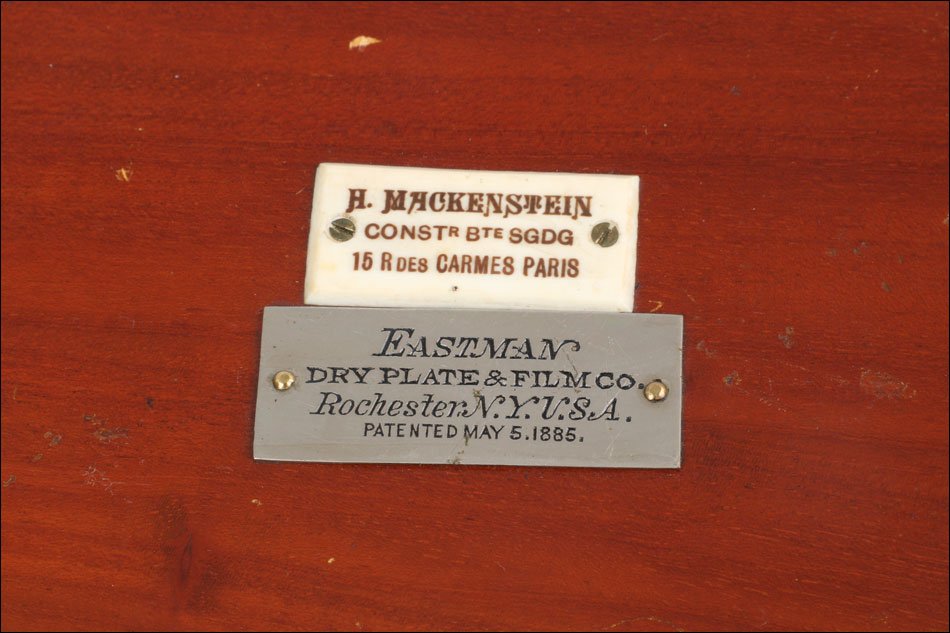



















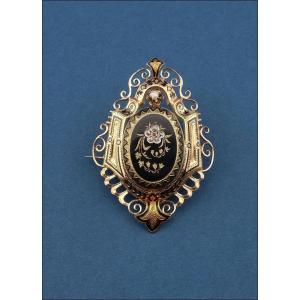


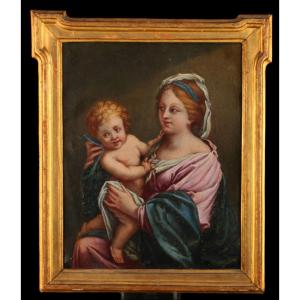
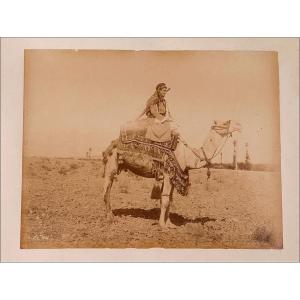






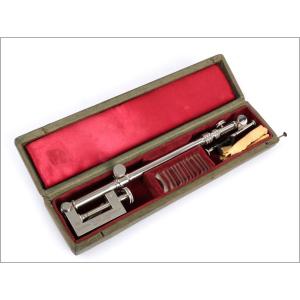











 Le Magazine de PROANTIC
Le Magazine de PROANTIC TRÉSORS Magazine
TRÉSORS Magazine Rivista Artiquariato
Rivista Artiquariato